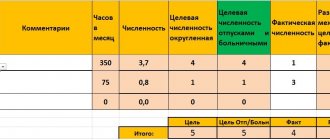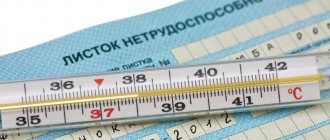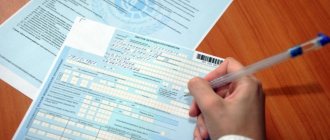In what cases is an employee entitled to sick leave?
Here are the cases when an employee has the right to take sick leave:
1.presence of injury that interferes with work activities;
- in cases where the employee’s illness is viral in nature and threatens to infect others
- replacement of a prosthesis or urgent prosthetics needed by an employee is also included in this list.
In cases such as replacing a prosthesis or implant.
- After various illnesses, you may need sanatorium treatment as rehabilitation
- in case of essential care for a family member who needs help
- quarantine in kindergarten for a child
- during an employee's pregnancy
Important! Examination of temporary disability is a frequent case in practice. It is carried out to determine the employee’s condition and to check the correctness of the therapeutic effects and measures prescribed to him. This examination is carried out only in healthcare institutions: private and municipal.
Medical and social criterion of disability
Medical criterion - an accurate diagnosis in accordance with the accepted classification, reflecting the stage of development, clinical variant and severity of the disease, phase of the disease, in case of exacerbation - the severity of the exacerbation, the degree of functional impairment, complications; accompanying illnesses.
Social criterion – the nature and working conditions of the patient, which determine the labor prognosis for a specific disease. The attending physician must find out and record in the medical documentation the nature and working conditions of the patient: the presence of unfavorable production conditions and occupational hazards, organization, frequency and rhythm of work, load on individual organs and systems, body position during work, production duties and skills, qualifications.
However, the presence of a disease is not always accompanied by disability. Thus, in the presence of the same diagnosis, the issue of patients’ ability to work is resolved differently: with pustular lesions of the hands, a cook is unable to work, an accountant can perform his professional duties. Thus, in the presence of an illness, a person can be able to work if the disease does not interfere with the performance of professional work, and disabled if the performance of work is difficult or impossible.
The cause of disability is not always the illness of the patient himself; the reason may be the removal from work of a healthy employee, for example, due to quarantine.
Medical and social criteria must always be clearly defined and reflected in medical documentation in accordance with the requirements of current legislation in the field of social insurance of citizens.
Thus, disability should be understood as a condition caused by illness, injury, its consequences or other reasons, when the performance of professional activities - in whole or in part, for a limited time or permanently - is impossible. Based on duration, temporary (T) and permanent disability are distinguished.
Types of temporary disability
| Kinds | Characteristic |
| Complete temporary disability | It consists of providing the employee with a special regime for a short period of time, after which the employee fully recovers |
| Partial or temporary disability | The employee is entitled to lighter work or a reduction in the amount of work. The examination of temporary disability has quite a lot of functions besides determining the employee’s health status, prescribing specific treatment and issuing sick leave for a certain period. For example, in the case of specific diseases, the number of people affected by them is tracked. Influenza is considered quite common. When tracking all sick people, the possibility of a local epidemic (in a specific organization) and in a certain region of the country is considered. In the first case, a quarantine may be declared to prevent the spread of the disease. |
Periods of incapacity for injuries
First, we will consider various injuries that can occur both at home and during the employee’s professional activities.
These include, for example, the following:
- An open wound of the hairy area of a designated part of the body. Depending on the complications, the time frame varies from seven to twenty-five calendar days.
- For a penetrating wound of the orbit, the time period is 30-50 days based on the international list.
- A fracture of the lower jaw is also regulated and, depending on the presence of bone displacement, is limited to a period of up to 45 days.
- If a person dislocates a cervical vertebra, then the estimated period of disability is from one hundred five to one hundred thirty days from the date of receipt of this injury.
- A rib fracture is normalized within a time frame of 16-30 days, depending on the displacement. Multiple fractures last from 30 to 90 days, depending on the number of broken bones and the presence of displacement at the fracture site.
- With an open wrist injury, disability for 15-30 days from the moment of injury is considered normal.
Regulatory documents for the examination of temporary disability in 2020
- The main regulatory document providing for the examination of temporary disability is Federal Law No. 323 “On the fundamentals of protecting the health of citizens of the Russian Federation”.
- To develop this normative act, other by-laws were adopted. The main one is considered to be “Order of the Ministry of Health and Social Development of the Russian Federation No. 624”.
- Based on the above regulations, a doctor’s job description is developed and approved, which he is obliged to follow.
Requirements for conducting an examination of temporary disability.
Also, the examination of the disability of citizens of the Russian Federation is regulated by the Constitution of the Russian Federation, the Labor Code
The requirements for conducting the examination include:
1) the attending doctor can conduct this examination only in an institution that has the appropriate license. If the doctor accepts privately, then he must have a license to conduct medical activities and conduct a disability examination. In addition, there must be a certificate of completion of advanced training courses in the examination of temporary disability;
2) the clinical expert commission (CEC) of the medical and preventive institution (HCI) where the citizen is observed;
3) KEC of the health care management body (city, district, etc.), that is, the body that controls a specific health care facility;
4) KEC of the governing body of the subject of the federation (territory, region, etc.);
5) chief specialist in the examination of temporary disability of the Ministry of Health of the Russian Federation.
Important! Based on the results of the examination, the doctor can determine the need to issue a certificate of incapacity for work. Depending on the severity of the condition and the identified illness (pregnancy, injury, etc.), the validity period of the sheet can be determined. If the ability to work has been restored, then the certificate of incapacity for work is no longer extended, but closed, about which a corresponding entry must be made.
Medical and social examination
The determination of disability (permanent loss or limitation of ability to work) in most cases is preceded by temporary loss of ability to work (staying on sick leave).
For each disease there are approximate periods of temporary disability. If the duration of temporary disability significantly exceeds the indicative periods given below (despite adequate treatment), then we can already talk about the presence of signs of persistent disability, i.e. disability (in cases that do not contradict the provisions of Order 585n). In this case, you can discuss with your attending physicians the possibility of referral to MSA in order to consider the presence of signs of disability. If the attending physicians refuse to refer you to MTU (as practice shows, in most cases they have reasons for this, but of course they can occasionally make mistakes), then you have the right to apply to MTU yourself.
Estimated periods of temporary disability for the most common diseases and injuries (in accordance with ICD-10). Recommendations for heads of medical institutions and attending physicians, specialist doctors of the executive bodies of the Social Insurance Fund of the Russian Federation (approved by the Ministry of Health of the Russian Federation and the Social Insurance Fund of the Russian Federation dated August 21, 2000 No. 2510/9362-34, 02-08/10- 1977P)
Estimated periods of temporary disability for some infectious and parasitic diseases
Approximate terms of temporary disability for neoplasms
Approximate periods of temporary disability for diseases of the blood, hematopoietic organs and certain disorders involving the immune mechanism
Estimated periods of temporary disability for diseases of the endocrine system, eating disorders and metabolic disorders
Estimated periods of temporary disability for mental disorders and behavioral disorders
Approximate terms of temporary disability for diseases of the nervous system
Approximate periods of temporary disability for diseases of the eye and its adnexa
Approximate terms of temporary disability for diseases of the ear and mastoid process
Approximate terms of temporary disability for diseases of the circulatory system
Approximate periods of temporary disability for respiratory diseases
Approximate terms of temporary disability for diseases of the digestive system
Approximate periods of temporary disability for diseases of the skin and subcutaneous tissue
Estimated periods of temporary disability for diseases of the musculoskeletal system and connective tissue
Estimated periods of temporary disability for diseases of the genitourinary system
Estimated periods of temporary disability during pregnancy, childbirth and the postpartum period
Approximate periods of temporary disability for injuries, poisoning and other consequences of external causes
Order of the Ministry of Health and Social Development of the Russian Federation dated June 29, 2011 N 624n ON APPROVAL OF THE PROCEDURE FOR ISSUING CARDS OF DISABILITY FOR WORK
Algorithm for conducting a disability examination
| Stage | Characteristic |
| Diagnostics | The attending doctor examines the patient, makes a diagnosis and prescribes treatment. If necessary, the period of incapacity for work is determined, sick leave is issued and the date of the next visit is set. The doctor records the course of the disease in the patient's chart. |
| KEC consultation | If the course of the disease is protracted, more than 15 days, the doctor sends the patient for a consultation to the KEC. This commission monitors the patient’s health status, issues recommendations for further treatment, and makes a decision on transferring the patient to another job. |
| Referral to MSEC | If the course of the disease is unfavorable, the CEC may refer you to MSEC if four months have passed since the disease. This commission will already determine the level of disease, possibly establish disability, and assess vital functions. |
Draft order of the Ministry of Health of Russia dated December 19, 2012 On approval of the Procedure for conducting an examination of temporary disability
1. This Procedure establishes the rules for conducting an examination of temporary disability.
2. Examination of temporary disability is carried out in relation to citizens in connection with diseases, injuries, poisoning and other conditions associated with temporary loss of ability to work, if it is necessary to care for a sick family member, in connection with quarantine, during prosthetics in a hospital setting, in connection with pregnancy and childbirth in order to determine the employee’s ability to carry out labor activities, the need and timing of temporary or permanent transfer of the employee for health reasons to another job, as well as making a decision on sending a citizen for a medical and social examination. 3. The examination of temporary disability is carried out by medical and other organizations engaged in medical activities that have a license to carry out work (services) for the examination of temporary disability (hereinafter referred to as medical organizations). 4. Examination of temporary disability is carried out:
a) the attending physician;
b) a paramedic, in cases where he is assigned certain functions of the attending physician in the manner established by the Ministry of Health of the Russian Federation;
c) a dentist, if there is no dentist in the medical organization providing primary health care or its department, if the patient has dental diseases;
d) a medical commission of a medical organization, appointed by the head of the medical organization from among doctors who have been trained in the examination of temporary disability.
5. The attending physician (paramedic, dentist) carrying out the examination of temporary disability:
· establishes the fact of temporary disability based on the results of a medical examination, the nature and conditions of work, and social factors;
· prescribes the necessary examinations, consultations, recommends medical and health measures, the type determines the period of incapacity for work, taking into account the individual characteristics of the course of the main and concomitant diseases (conditions), the presence of complications of the disease (condition);
· single-handedly issues a certificate of incapacity for work for a period of up to 15 calendar days inclusive. In the cases specified in paragraph 4 of this Procedure, the paramedic or dentist alone issues a certificate of incapacity for work for a period of up to 10 calendar days inclusive;
· sets the date for the patient’s next appearance for an appointment;
· makes appropriate entries in the patient’s medical documentation;
· during subsequent patient visits for an appointment, reflects the dynamics of the disease, the effectiveness of the treatment, and justifies the extension of temporary disability;
· if disability continues after 15 days from the start date of temporary disability (10 days when examining temporary disability by a paramedic or dentist), refer the patient for an examination of temporary disability and extension of the certificate of incapacity for work by a medical commission;
· upon restoration of working capacity and discharge to work, reflects in the medical documentation the data and justification for closing the certificate of incapacity for work.
6. The medical commission of the medical organization evaluates the patient’s health status, the quality and effectiveness of the examination and treatment, the ability to carry out professional activities, determines the degree and timing of temporary disability, as well as the period for extending the certificate of incapacity for work.
7. Extension of a certificate of incapacity for work for a longer period than specified in paragraph 5 of this Procedure (but no more than fifteen calendar days at a time) is carried out by decision of the medical commission.
8. The decision of the medical commission is documented in a protocol, which indicates:
· date of the meeting of the medical commission;
· composition of the medical commission;
· information about the underlying disease or condition, concomitant diseases or conditions, as well as complications caused by the underlying disease and concomitant disease;
· recommendations for further medical examination and treatment of the patient;
· period for extending the certificate of incapacity for work.
The protocol is signed by members of the medical commission and entered into the patient’s medical documentation. 9. If there is an obvious unfavorable clinical and work prognosis, no later than four months from the date of the onset of temporary disability, the patient is sent to undergo a medical and social examination in order to assess disability, and in case of refusal to undergo a medical and social examination, the certificate of incapacity for work is closed. With a favorable clinical and work prognosis, no later than ten months from the date of the onset of temporary disability in conditions after injuries and reconstructive operations and no later than twelve months in the treatment of tuberculosis, the patient is either discharged to return to work or sent for a medical and social examination.
Legal aspects when issuing certificates of incapacity for work
| Who has the right to issue sick leave? | Who doesn't have the right |
| Medical organizations and doctors who are officially employed there; | Ambulance |
| Paramedics, dentists of a medical organization, other employees with secondary medical education - in cases established by the authorized federal executive body; | Blood transfusion stations |
| Attending physicians at clinics of research institutions (institutes), including clinics at research institutions (institutes) for prosthetics or prosthetics | In the emergency department of hospitals and clinics |
| Sanatoriums and rest homes do not issue sick leave |
Duration of disability during outpatient treatment
In case of a justified application to a medical institution, a sick leave certificate is issued by the attending physician. The duration of incapacity for work depends on the severity of the disease or the circumstances that caused the document to be issued.
The minimum period of illness for a working-age citizen is 3 calendar days. This time is required for the initial appointment, appointment and implementation of treatment, final examination and closure of sick leave.
The maximum period of incapacity for work, which is determined by the attending physician without additional measures, is 15 days. This period can be extended by the head physician of the hospital up to 30 days. Cases of typical seasonal diseases fit into this framework and extension of the period of incapacity for work is not provided for.
In case of complications of the disease, as well as in cases considered as severe, a monthly extension of the period of sick leave by a medical expert commission is possible. In this case, the period of incapacity for work can be increased to 10–12 months. At the end of this time, the commission makes a decision to terminate treatment due to recovery or to refer the patient for examination to determine disability.
When a certificate of incapacity for work is issued by a paramedic or dentist, sick leave is issued for no more than 10 days.
How is sick leave issued?
| Stages of registration | Detailed characteristics |
| Going to the doctor | If you get sick, you need to contact your local doctor for an examination and a sick leave certificate. At the moment there are two options: either it will be a paper sick leave or an electronic one. In order to use the electronic one, you need to find out in the accounting department of your enterprise whether an agreement has been concluded with the fund on the transfer of data through your personal account. If the accountant confirms this fact, then you can ask the doctor to issue an electronic sick leave, which is much more convenient and faster in terms of registration and payment. |
| What does the doctor do | The doctor creates a certificate of incapacity for work in a program in which three parties work - the fund, you and the doctor: he enters the necessary data, copies information from the electronic medical record. He also requests a unique electronic sick leave number from the system. The medical institution uploads the finished sick leave to the Social Insurance Unified Information System. When issuing a certificate of incapacity for work, it must be certified, only not with stamps, as before, but with an electronic signature. The employee will not see sick leave; he will receive an individual number, which must be provided to the accountant for further processing. |
| Further actions | The accountant is identified in the FSS personal account, finds this sick leave and can use the data from it, namely, when it began, when the person was discharged, enters the data into his program for calculation. You will also need to fill out your part: company name, average salary, length of service, etc. Additions to the sheet must be certified with the electronic signature that you use to submit electronic reports. |
| Benefit payment | The completed sick leave will instantly be sent to the Social Insurance Fund office at the insured person’s place of work. This information submitted by the doctor and accountant will be taken into account by the fund when calculating benefits. Then there are two payment options: if you belong to the regions with a pilot project, then the Social Insurance Fund directly pays sick leave to the employee, if not, then the employer. |
The employer pays for three days, the rest is covered by the Social Insurance Fund. If there is a pilot project in your city, then the payment comes entirely from the fund. The accountant of the enterprise only accepts the relevant documents, makes calculations, draws up an application and register in the program and sends it to the Fund. A social security employee checks and, if any errors are identified, sends a letter indicating them. The accountant makes the corrections and then sends it again. The authenticity of the electronic sick leave is confirmed by the signature of the doctor responsible for the patient. This is a special electronic signature, and each doctor has his own, which sharply reduces the number of fake sick leave certificates. Also, such a document is certified, if such a need arises, by specialists from the medical organization where the patient applied, and, in cases specified by legislative acts, by the chairmen of medical and medical commissions. After the necessary signatures appear on the electronic sick leave certificate, it will be sent to the Social Insurance Fund. The introduction of such document processing methods greatly speeds up the entire process of issuing and confirming medical papers.
Common errors on the topic
Mistake #1:
I have no work experience, I just got a job and got sick, the accountant says that I won’t be paid for sick leave
A comment:
No, in any case, you are required to pay it based on the minimum wage, according to the minimum calculation, it cannot be lower than this figure, for this purpose the minimum amount of money is taken for the calculation and multiplied by the number of sick days.
Mistake #2:
My salary for 2020 and 2020 exceeded the maximum possible for calculating benefits, will I be paid less?
A comment:
You will be paid based on the maximum possible figure, that is, no more than 2150.68 per day
Mistake #3:
Paper sick leave is no longer accepted
A comment:
This is a misconception, since an electronic sick leave in no way replaces a paper one, anyone who is comfortable can use it, especially since not all organizations have entered into an agreement with the Social Insurance Fund and registered in their personal account, and also issued an electronic signature to work on their website.











